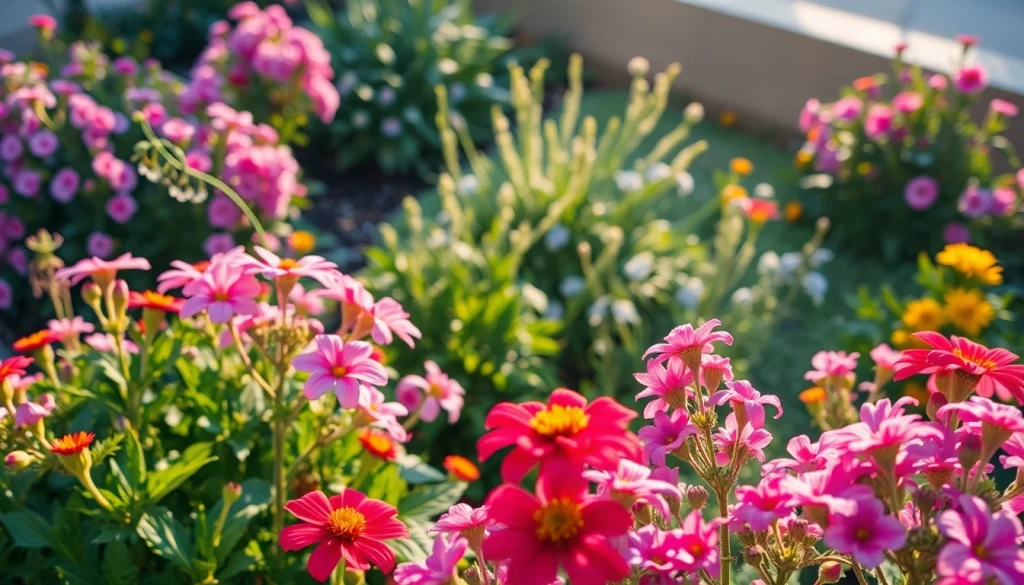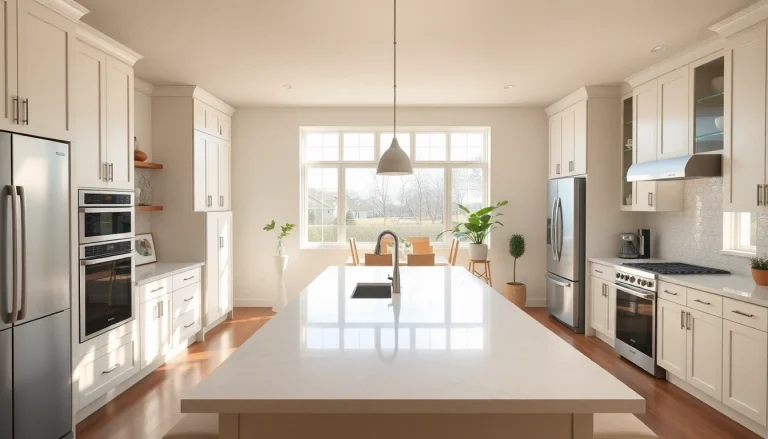
Understanding Landscape Design Services
What Is Landscape Design?
Landscape design involves the planning and creation of outdoor spaces that harmonize aesthetics with functionality. It is an art and a science that integrates nature and human-made structures, enabling the development of unique outdoor environments that cater to various purposes, from residential backyards to commercial outdoor spaces. A professional landscape design service typically considers the natural terrain, climate, local flora, and the specific needs of clients, ensuring sustainable and visually appealing results.
The Importance of Professional Design
Investing in professional landscape design is crucial for multiple reasons. First, skilled designers bring expertise in horticulture, aesthetic principles, and environmental design, which enables them to create tailored solutions that reflect the clients’ requirements while adhering to best practices in sustainability. Moreover, professional designers consider zoning laws, drainage, and ecosystems, ensuring that the designs are not only beautiful but also functional and compliant with local regulations.
Additionally, well-designed outdoor spaces can significantly increase property value and enhance the overall enjoyment and utility of the area, whether for relaxation, entertainment, or ecological benefits. For commercial spaces, professional landscaping contributes to a positive first impression, which can influence customer experience and brand perception. Thus, having a professional landscape design service can facilitate holistic and cohesive outdoor solutions that meet diverse client objectives.
Key Elements of Successful Landscape Projects
Successful landscape design projects incorporate several key elements:
- Color and Texture: The use of plant materials, pathway designs, and structural elements to create an appealing visual dynamic.
- Functionality: Incorporating purpose into the design, whether it’s for recreation, relaxation, or environmental management.
- Scale and Proportion: Ensuring elements are appropriately sized for their surroundings promotes balance and harmony within the space.
- Sustainability: Employing eco-friendly practices, such as native plant selection and sustainable materials, maximizes environmental benefits.
- Flow and Accessibility: Designing pathways and transitions to encourage movement and interaction within the landscape.
Types of Landscape Design Services
Residential Landscape Design Services
Residential landscape design services cater to homeowners seeking to improve their outdoor spaces. This may include the creation of gardens, patios, pools, and recreational areas. Designers work with clients to develop customized plans that meet their lifestyle needs, preferences, and budget constraints. The process often starts with consultations to understand client goals, leading to conceptual designs that detail the layout and selection of materials and plants, ensuring that the final result is tailored and functional.
Commercial Landscape Design Services
Commercial landscape design services focus on enhancing business properties, including retail spaces, office buildings, and hospitality venues. Professional designers work to create landscapes that enhance the aesthetic appeal of a commercial property, improve environmental sustainability, and provide functional spaces for employees and customers. Incorporating elements like seating areas, green roofs, and outdoor dining spaces not only boosts the usability of the space but also elevates the establishment’s brand image.
Sustainable Landscape Design Practices
Sustainability in landscape design involves creating outdoor spaces that promote ecological balance while preserving resources. Sustainable landscape design practices include:
- Native Plant Selection: Utilizing plants that are indigenous to the region helps maintain local biodiversity and requires less water and care.
- Rainwater Harvesting: Designing systems that capture and utilize rainwater can lead to a reduction in water usage.
- Composting and Soil Management: Engaging in soil health practices can improve plant growth and reduce the need for chemical fertilizers.
- Energy Efficiency: Implementing designs that optimize sunlight, shade, and natural cooling approaches can lower energy consumption.
Selecting the Right Landscape Design Service
Evaluating Landscape Design Portfolios
Choosing the right landscape design service begins with evaluating portfolios. A designer’s portfolio provides insights into their aesthetic style, areas of expertise, and the range of projects they’ve completed. When reviewing portfolios, it is essential to look for:
- Variety: A diverse range of styles and projects indicates flexibility and creativity.
- Project Completeness: Completed projects offer a clearer picture of how designs translate into finished landscapes.
- Client Testimonials: Feedback from previous clients can shed light on the designer’s professionalism, reliability, and communication skills.
Questions to Ask Your Landscape Designer
Before committing to a landscape design service, it is critical to ask several questions to clarify expectations, process, and outcomes. Here are some essential queries to consider:
- What is your design process? Understanding the steps involved can help establish a timeline and workflow.
- Can you provide references? Speaking with former clients may reveal the designer’s strengths and weaknesses.
- How do you handle project changes or unexpected challenges? Knowing how a designer adapts to changes is crucial for a successful project.
- What is the estimated timeline and budget for the project? Clear expectations on budget and duration help establish a smoother planning phase.
Understanding Service Costs and Estimates
Landscape design service costs can vary significantly based on project complexity, size, and geographical location. Professionals typically provide estimates that consider design fees, labor, materials, and other expenses. Clients should request a detailed breakdown to understand where funds will be allocated. Common pricing models include:
- Flat Fee: A set price for design services, ideal for straightforward projects.
- Hourly Rate: Charged for the time spent on the project, common for initial consultations or smaller tasks.
- Percentage of Project Cost: A percentage taken from the total project cost, typical for larger, comprehensive projects.
Implementing Your Landscape Design
From Concept to Reality: The Design Process
Transforming a landscape design concept into reality involves several stages, beginning with the initial design proposal. This proposal typically includes layout plans, plant selections, and material choices. Once the design is approved, the implementation phase begins:
- Site Preparation: Clearing the area, grading the ground, and preparing it for planting and construction.
- Planting: Installing plants according to the design specifications, ensuring each species is placed in optimal conditions.
- Installation of Features: Building hardscape elements, such as patios, walkways, and water features that complement the planted areas.
- Final Touches: Adding mulch, decorative elements, and ensuring all features are functional and aesthetically pleasing.
Common Challenges and Solutions in Landscape Projects
Every landscape project faces challenges. Here are several common obstacles and practical solutions:
- Budget Overruns: To prevent cost overruns, it’s vital to establish a clear budget upfront, including a contingency fund for unexpected expenses.
- Poor Soil Conditions: Conducting soil tests before plant installation can identify issues that can be remedied through amendments or the use of raised beds.
- Weather Delays: Having a flexible schedule and contingency plans can mitigate the effects of unfavorable weather conditions on timelines.
Maintenance Tips for Your Landscape Design
Post-installation care is essential for maintaining the beauty and health of a landscape. Here are key maintenance tips to ensure longevity:
- Regular Watering: Establishing an irrigation schedule that aligns with plant needs can help maintain vitality.
- Pruning and Trimming: Routine maintenance minimizes overgrowth and promotes healthy plant development.
- Weed Management: Regularly removing weeds prevents competition for nutrients and space.
- Mulching: Applying mulch aids in moisture retention and temperature regulation in the soil.
Measuring the Success of Your Landscape Design
Key Performance Indicators for Landscape Projects
To assess the effectiveness of landscape design services, several key performance indicators (KPIs) can be tracked:
- Property Value Increase: Monitoring changes in property value post-installation can validate the investment.
- Client Satisfaction Levels: Gathering feedback through surveys or direct communication can provide insights into the success of the project.
- Environmental Impact: Evaluating aspects like water usage efficiency and biodiversity can indicate sustainable success.
Customer Satisfaction and Feedback in Landscape Design
Customer feedback is invaluable for understanding the impact of landscape design services. Engaging clients post-project with surveys or informal discussions can yield insights into their satisfaction levels, preferences, and any areas for improvement. Testimonials can also serve as powerful marketing tools, enhancing the company’s reputation.
Long-Term Benefits of Professional Landscape Design Services
Investing in professional landscape design provides dividends beyond visual appeal. Long-term benefits include:
- Enhanced Property Value: A well-designed landscape can significantly boost the market value of a property.
- Increased Utility: Quality designs extend the usable outdoor space, providing areas for recreational activities and gatherings.
- Environmental Benefits: Thoughtful landscape management can contribute positively to local ecosystems, promoting biodiversity and sustainable practices.
- Reduced Maintenance Costs: When properly designed, landscapes can require less upkeep over time, saving money and effort.






